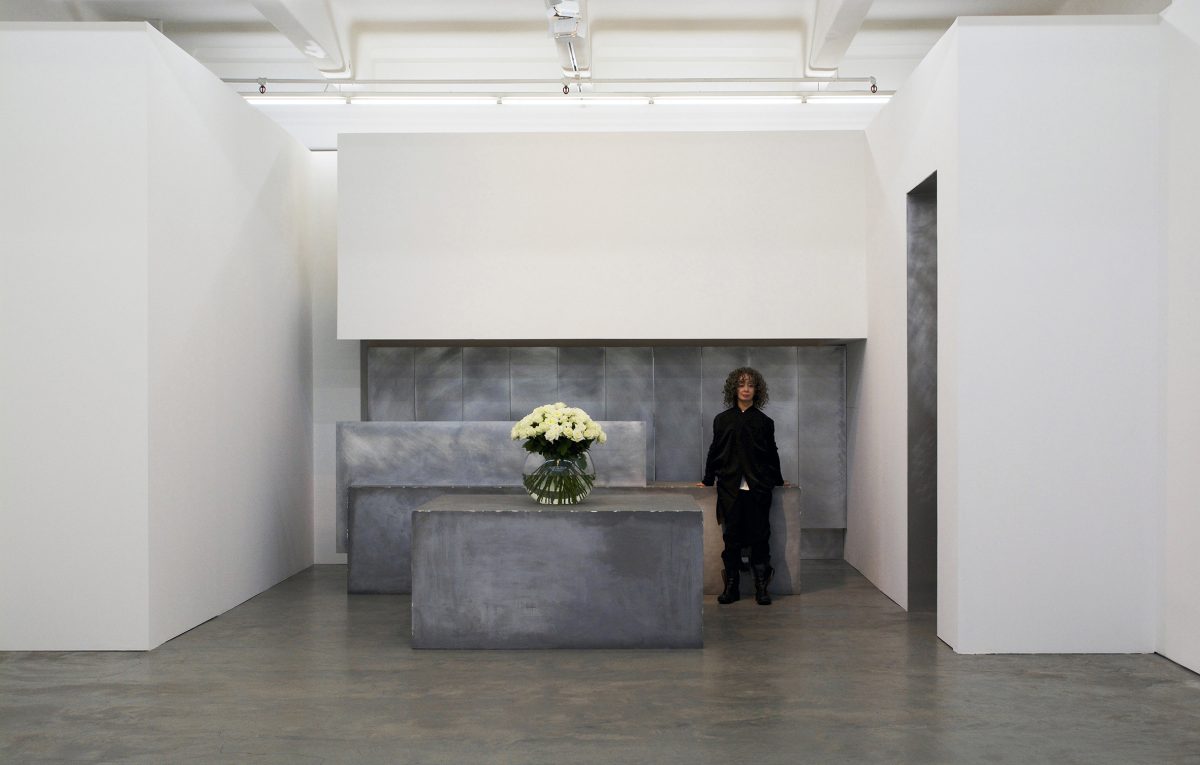Callum Morton
Reception
3rd March – 23rd April 2016
Anna Schwartz Gallery
Callum Morton’s work Reception (2016) in many senses epitomises his long exploration of the architectural mise-en-scene.
A one to one replica of the reception foyer of the gallery (designed by Denton Corker Marshall in 1993) has been placed half way down the main space facing the audience. There is a doorway in one of its sidewalls that leads the audience behind the work. This reconstruction duplicates the space but equally the sense one has of being on a threshold or a border, one that you must pass through on the way to the real encounter in the space beyond.
Standing at the edge of the reception desk is an animatronic figure of the gallerist, Anna Schwartz. The figure is a bit wrong. It begins with a tremulous robotic greeting, corrects itself, gets a bit stuck and confused, and finishes by directing you through the door toward ‘it’ in the space beyond. This dialogue infers questions about access and community and about the connections between the particular dynamics of the art world and their relationship to the world outside.
Morton’s longstanding interest in architectural models has engaged with the disenchantment of the grand narrative of architectural modernism and the ideals they embody. Examples include Untitled (2003) based on the United Nations building in New York, Melbourne’s infamous Gas and Fuel (2002) and his work Valhalla (2007) made for the Venice Biennale. Morton has consistently privileged the people and stories that shape iconic spaces. In his work One to One (2011) he recreated the fireplace from Heide 2, the former house of John and Sunday Reed, which now forms part of Heide Museum of Modern Art, and placed it in the contemporary gallery. Removed from its context, this disembodied object, was animated by a recording of a mundane conversation between these two legendary supporters of Australian modern art in the twilight of their lives.
In ‘Reception’, Morton has created a piece of melancholic theatre, one that is equally a work of science fiction as it is an intimate portrait of a gallerist set in the liminal world between public and private space.
Images

Callum Morton
Reception, 2016
installation: mixed media, animatronic model, clothing, leather boots
344 x 657 x 512 cm
installation view: Anna Schwartz Gallery
